Shifting from First to Fourth Position and Vice Versa
Shifting from one position to another is done by sliding the thumb on the neck of the cello. The fingers have their own roles. It is very easy if the first note of the new position is played with the same finger as the last note of the previous position, as in this example:

Here, the thumb on the neck of the cello and the fingers on the strings slide quickly and easily from one position to another. It is more difficult if the first note of the following position is played with a different finger from the last note of the previous position. In such cases, with a few exceptions, we can determine a basic rule that the finger already on the string slides into the new position without leaving the string, and either stays in the place it has reached or is quickly lifted. This depends on whether the note in the new position is played with a higher- or lower-numbered finger, but the “new” finger has to fall into place at the moment the new position is reached. Therefore, in a shift involving two fingers, one has to slide and the other drop onto the string. According to the above rule, we would have to drop the finger that is starting the new position.
The reverse is not absolutely forbidden, as the player sometimes achieves an expressive glissando that way. However, the learner is advised not to deviate from the rules at the beginning; the rules help achieve precision in playing and avoids many redundant or ugly-sounding glissandi.
We will now take a closer look at individual instances of shifting:
1) when the shift occurs on the same finger, and
2) when there is an open string between the two positions, for example:

In this example, only the thumb shifts into the new position. The finger that plays first in the new position (E in the first measure, B and F in the third, D in the fifth, G in the sixth, B in the seventh) drops onto the string at the moment the thumb reaches the new position. If the finger were to touch the string too early, there will be one of the ugly glissandi mentioned above.
3) If the first note of the new position is fingered with a higher-numbered finger than the last note of the previous position, for example:

Here, the first finger shifts to its appointed place in fourth position, namely to the E. At the moment when this note is reached, the second finger falls on the F (in example A), or the third finger on the F-sharp (example B), or the fourth finger on the G (example C).

Here, the second finger shifts to the F in fourth position. At the moment this note is reached, the third finger drops onto the F-sharp (example D), or onto the fourth finger on the G (example E).
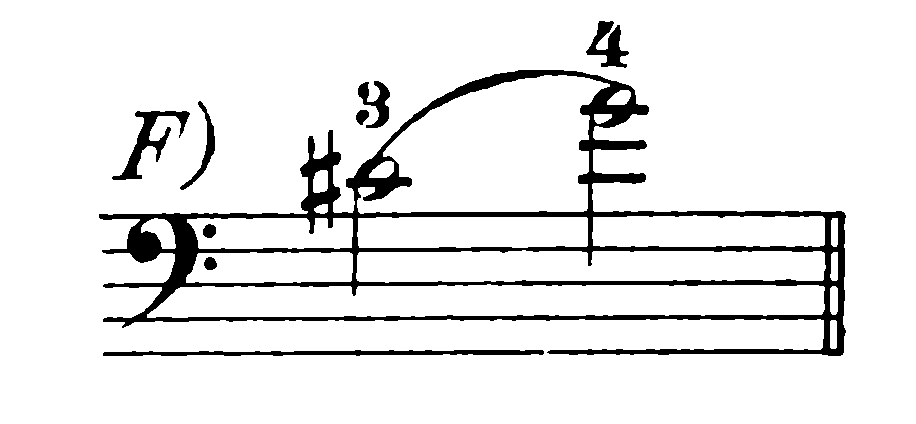
In example F, the third finger shifts onto the F-sharp in fourth position, and at the moment when this note is reached, the fourth finger drops onto the G.

In example G, the first finger shifts down from fourth to first position on the B. At the moment when this note is reached, the second finger drops onto the C. In example H, the third finger drops onto C-sharp. In example I, the fourth finger drops onto D.

In example K, the second finger shifts down to C in first position. The third finger then drops onto C-sharp. In example L, the fourth finger drops onto D.
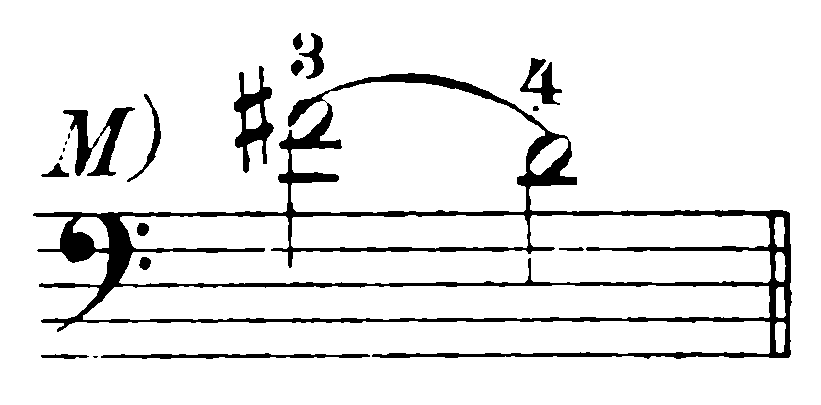
In example M, the third finger slides down to the C-sharp in first position, and the fourth finger drops onto D.
4) The first note in the new position is played with a lower-numbered finger than the last note of the old position. In this case, in addition to the previous instructions, the shifting finger—which until then kept its place in the new position—now needs to be lifted in order not to “cover” the next finger.
If the first note of the following position is played with a lower-numbered finger than the last note of the previous position. In this case, in addition to what has been said earlier, the sliding finger, which until then maintained its place in the new position, must now be lifted in order not to cover the subsequent lower-numbered finger.
In this case, we have to differentiate between going from a higher to a lower position, and vice versa:
a) Shifting from a higher to a lower position

In example N, the fourth finger shifts down to the D in first position; the moment it reaches this note, it is no longer needed. The first finger drops onto B. In example O, the second finger drops onto C. In example P, the third finger drops onto C-sharp.

In example R, the third finger shifts down to the C-sharp in first position, and is no longer needed. The first finger drops onto B. In example S, the second finger drops onto C-natural.
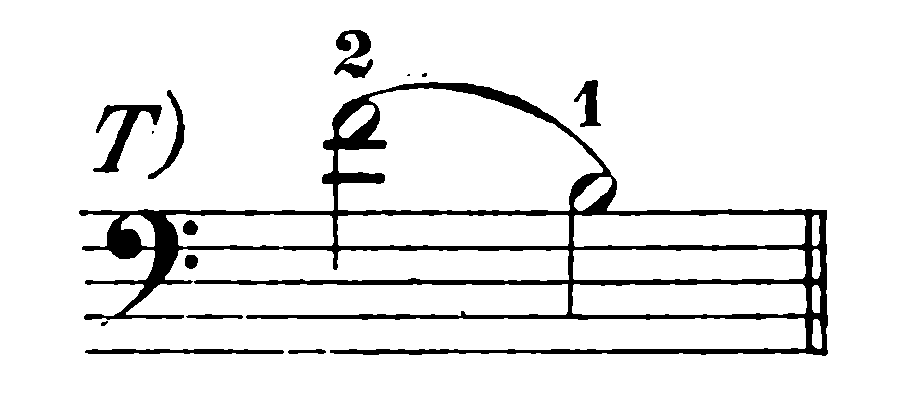
In example T, the second finger shifts down to C in first position and is lifted. The first finger drops onto B.
b) Shifting from a lower position to a higher one (see note)1

In example U, the fourth finger shifts to G in fourth position and is lifted. The first finger drops onto E. In example V, the second finger drops onto F. In example W, the third finger drops onto F-sharp.

In example X, the third finger shifts to F-sharp in fourth position and is lifted. The first finger drops onto E. In example Y, the second finger drops onto F.
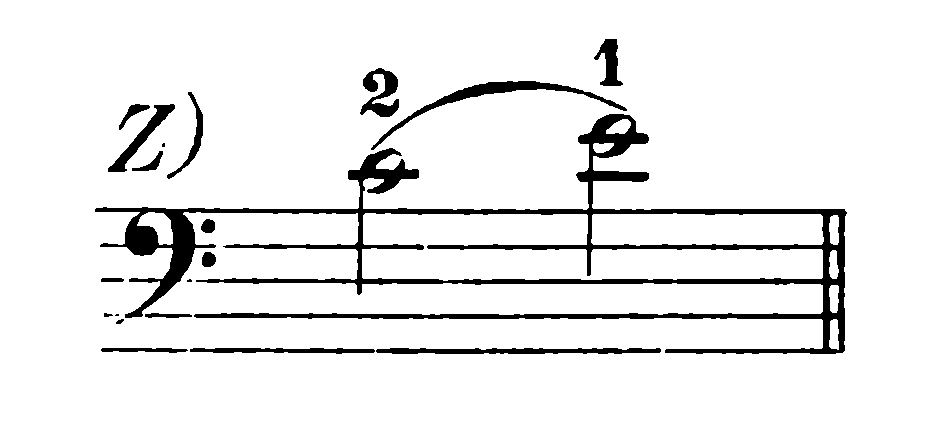
In example Z, the second finger shifts to F in fourth position and is lifted. The first finger drops onto E.
These rules for shifting between first and fourth position remain the same regardless of whether the hand is in closed or extended position.
Since the given examples were exclusively in closed position, here are some examples in extended position:

Change of Position Across More Than One String
The rules established remain the same whether the new position is on the same or on a different string. Here, too, a distinction is made between the four different cases of change of position listed above, namely:
1) if the shift is done with the same finger,
2) if there is an open string between both positions,
3) if the first note in the new position is fingered with a higher-numbered finger than the last note of the old position,
4) if the first note of the new position is fingered with a lower-numbered finger than the last note of the old position.

In contrast to the corresponding shifts on one string, the shifts using one finger across two different strings are the most difficult and should be avoided by beginners.
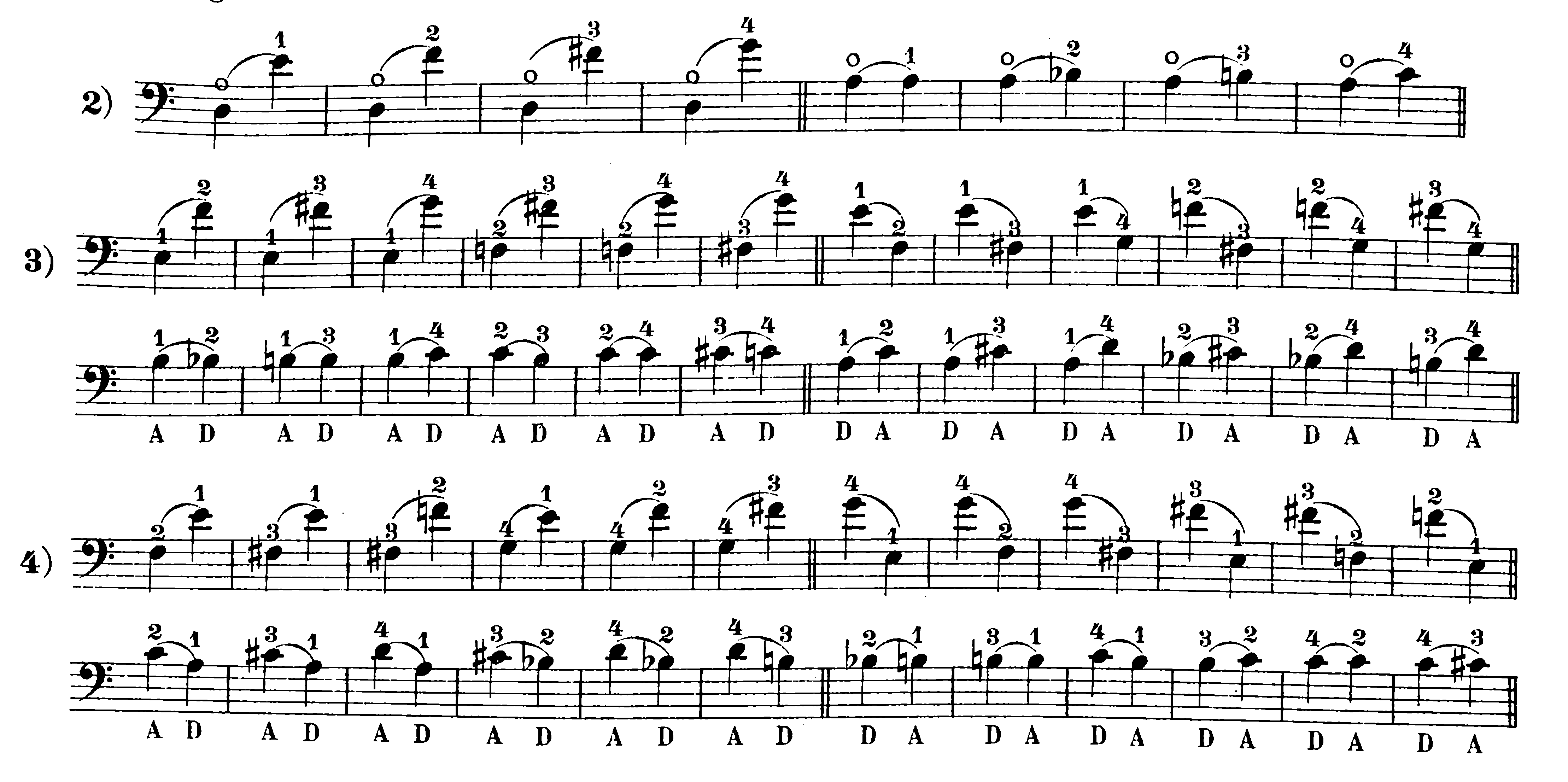
These shifts follow the same rules as for shifts on one string, except that the player must not neglect to notice that the shifting finger only shifts on the string on which it is already located. For example, in example 3, first line, measure 1, the first finger shifts from E to A in fourth position on the D-string, and the second finger drops down in fourth position on the A-string. In example 4, first line, measure 1, the second finger shifts from F to B-flat in fourth position on the D-string, while the first finger drops down on E on the A-string. In example 4, line 2, measure 1, the second finger shifts from C to the F in fourth position on the A-string, while the first finger drops onto A on the D-string.
When doing position shifts across two strings, the main difference in the last example (when the first note of the new position is played with a lower-numbered finger than the last note of the old position) the shifting finger is lifted when the player reaches the new position, so as not to cover the new, lower-numbered finger. Since the playing fingers are on different strings, the new finger does not get covered by the old finger.
Examples of Position Shifts between First and Fourth Position
1) The first note of the new position is played with the same finger as the last note of the old position.
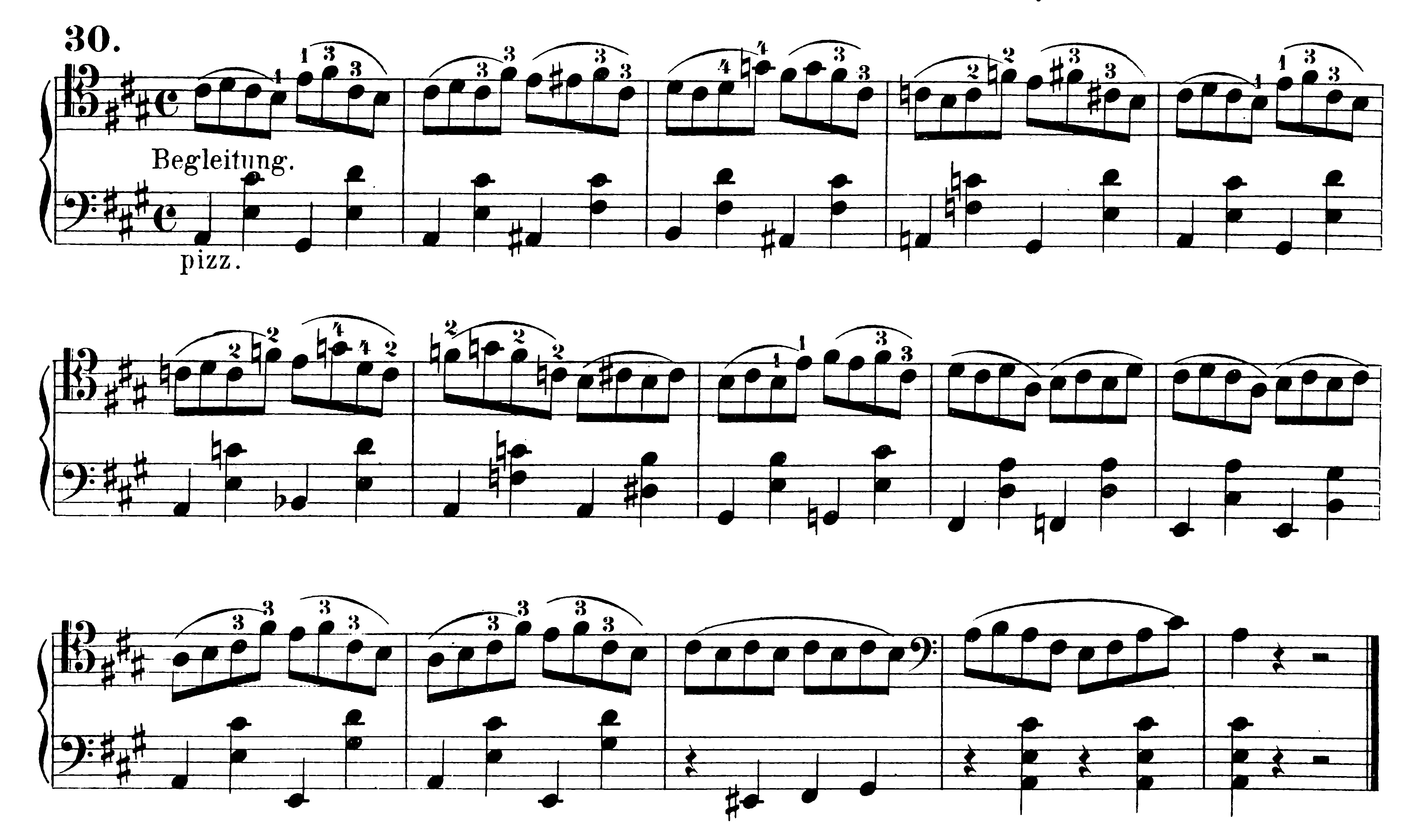
2) Shifting across an open string
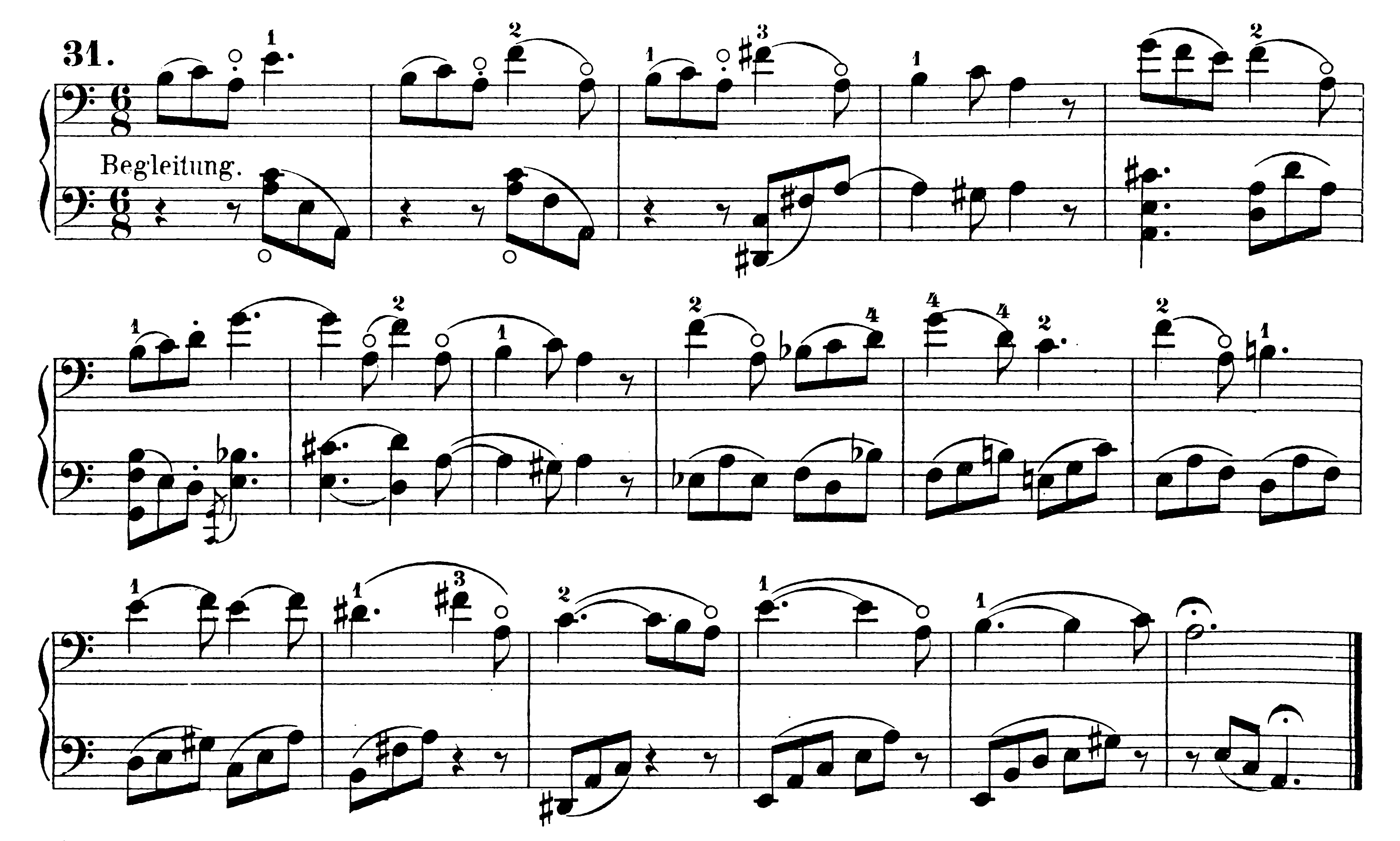
3) The shifting finger is lower-numbered and remains on the string
See note2
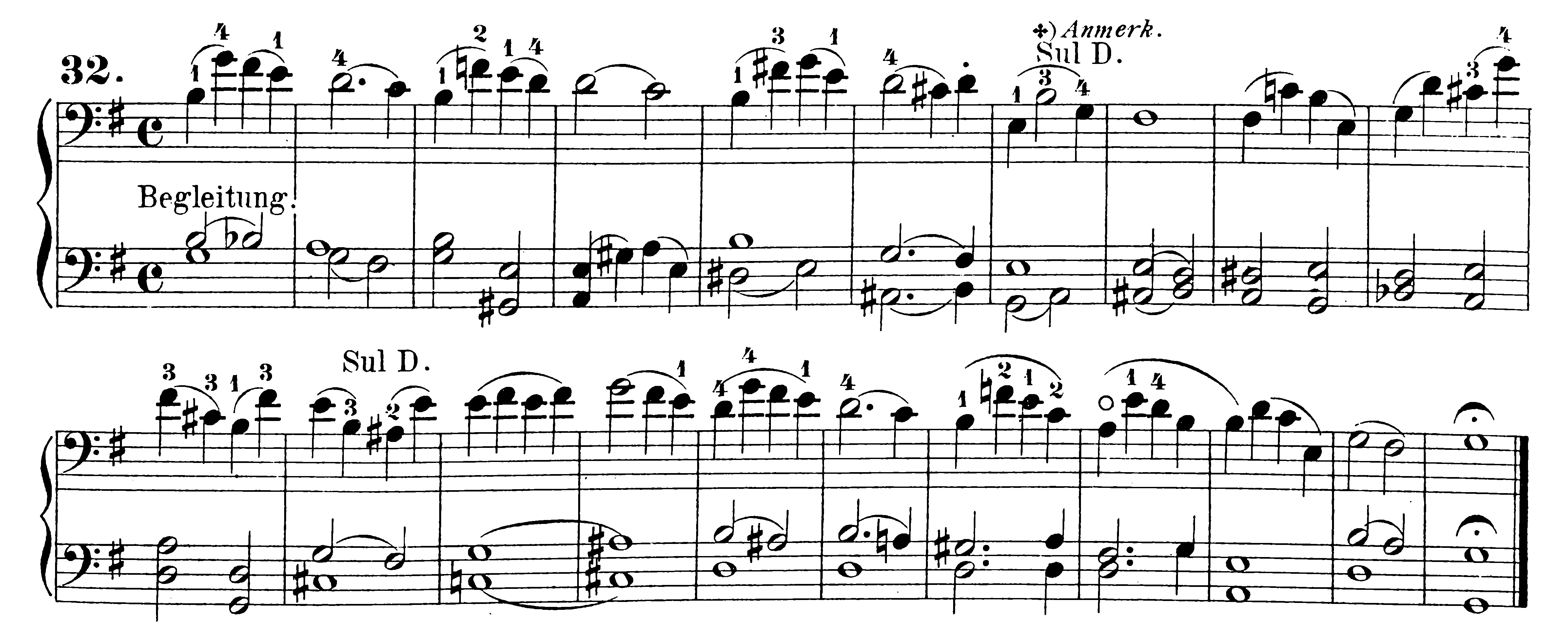
4) The higher-numbered finger executes the shift, then lifts when the new finger comes down on the string.
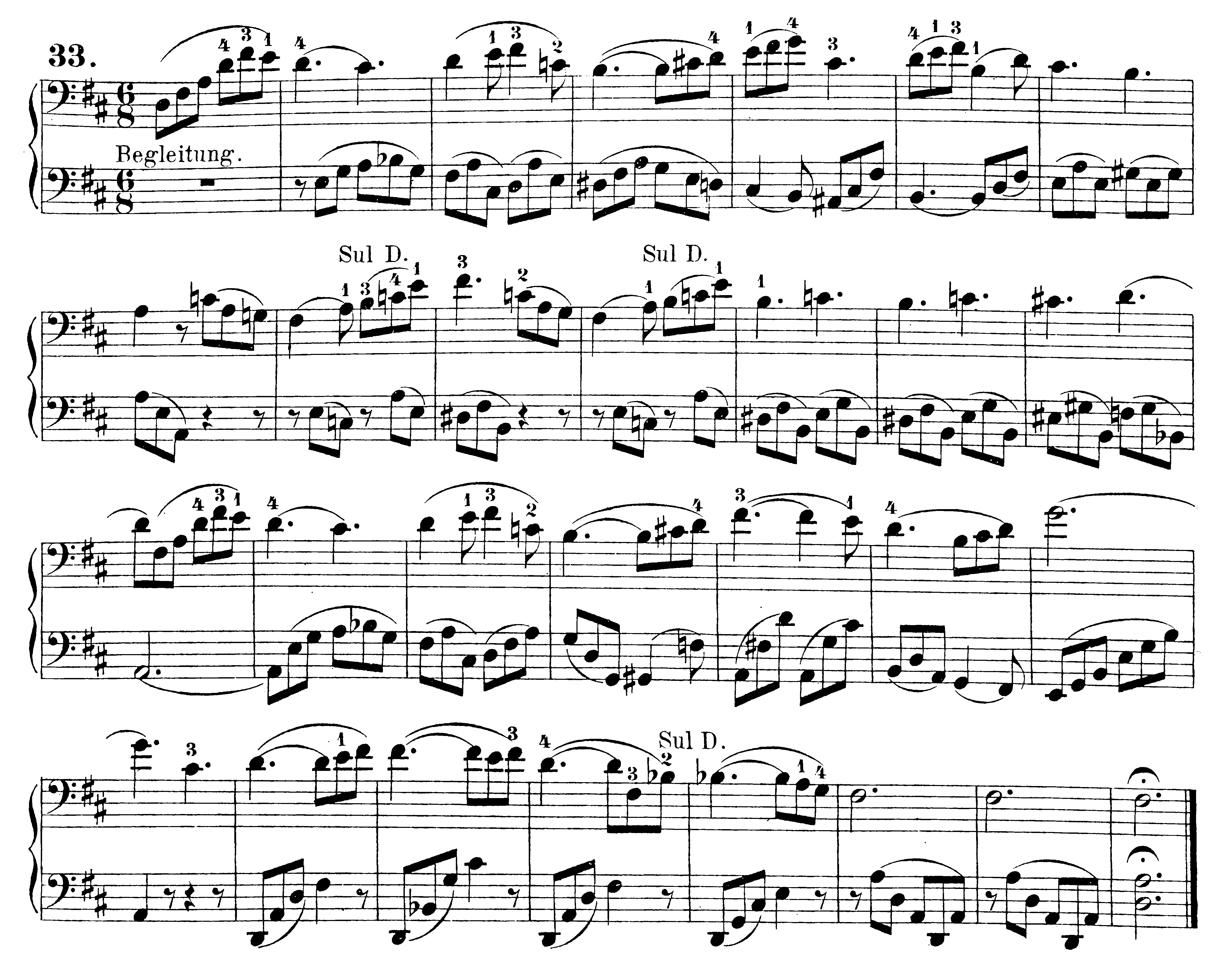
Exercise for Position Shifts in Extended Position
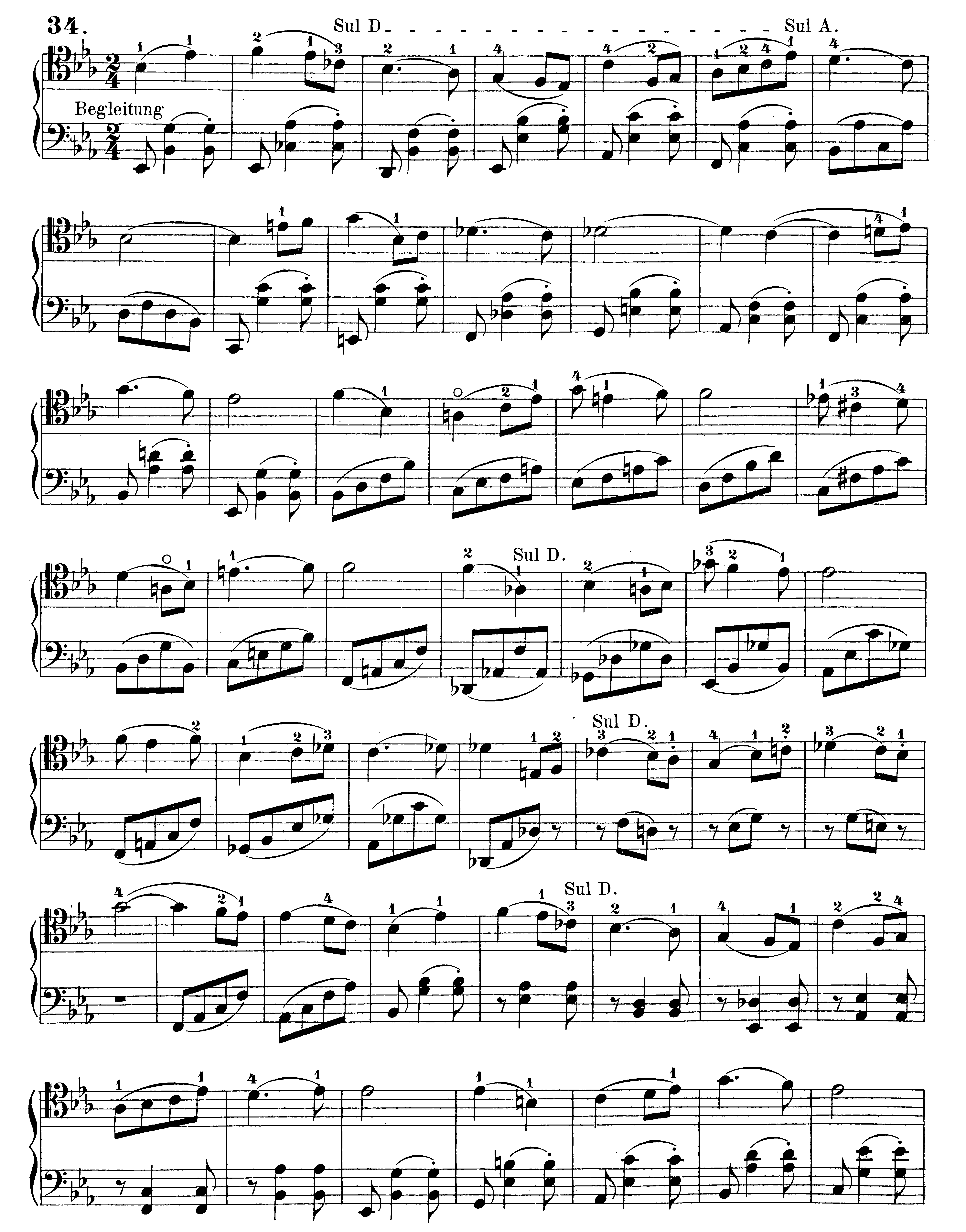
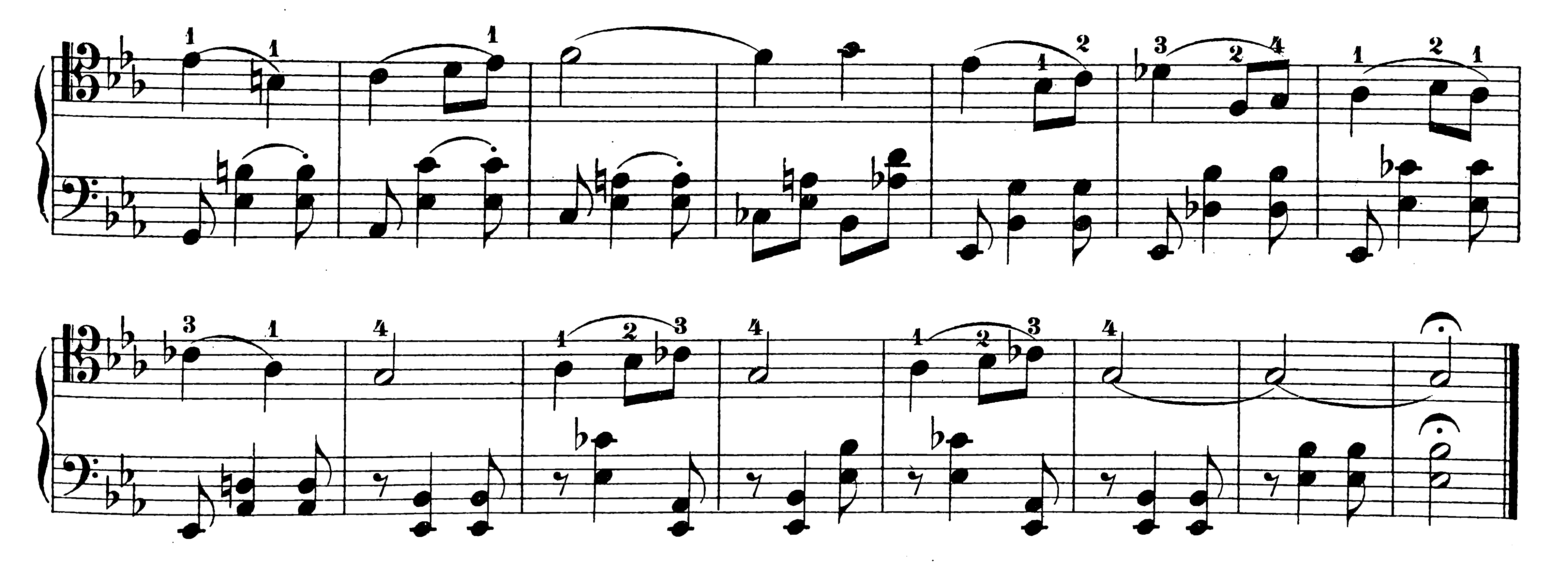
Exercise for Position Shifts on Multiple Strings
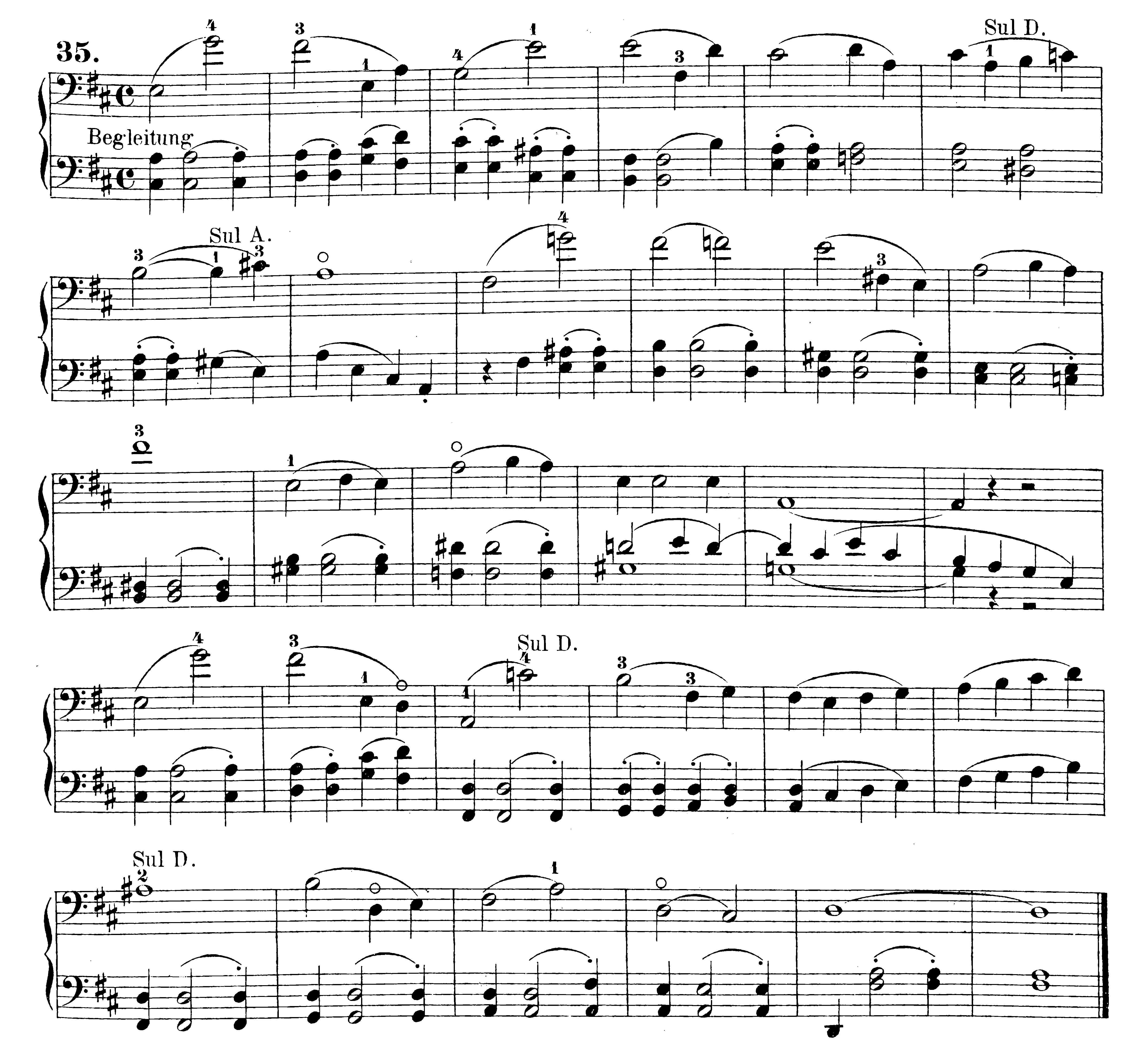
-
Davidoff’s note: “These are the most difficult cases to explain. Here, we make the most exceptions to the basic rule, often by sliding the new finger instead of the old one. In advanced players, what actually happens is a kind of bunching and crossing of the fingers, with the hand narrowing to bring the fingers closer together. Therefore, in example U, the fourth finger does not slide from D to G, but only to about E. During the shift, the hand narrows so much that the first finger comes very close to the fourth, displaces it at the E, and takes its place.” ↩
-
Davidoff’s note: If one or more notes can be played on different strings, the desired string is indicated by “sul A, sul D, sul G, sul C” or by “I (A), II (D), III (G), IV (C).” ↩